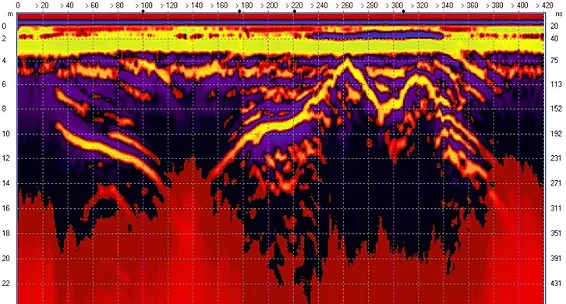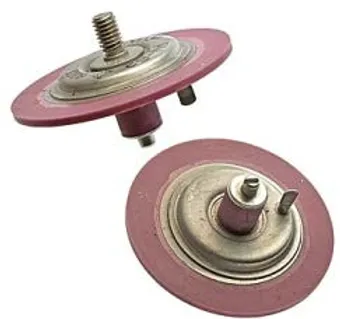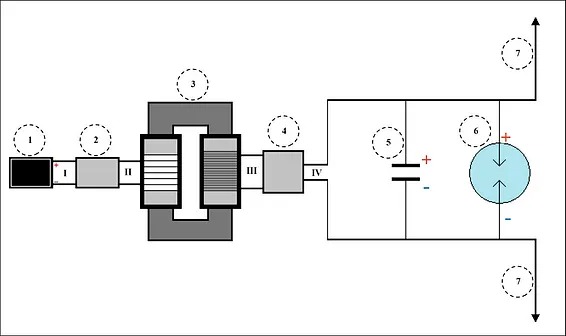
… at low weight on batteries, this is due to the performance of hydrogen, as I was told? Please provide technical information of such generation mechanism, understandable for a qualified user. Also in the technical documentation it is written that the peak voltage of the transmitter can reach 21 000 V. This is a very dangerous high voltage. Any comment?
Impulse signal shaping network for georadar Loza is simple and well-known. Master generator operates from a small accumulator with 12 V voltage and 1.2-4 A/hour capacity. The generator produces short impulses. Duty ratio (production tempo) of the impulse is regulated. Impulses from the generator are sent to HV transformer, at outlet of which the amplitude (voltage) of impulses reaches 1000-3000 Volts. Then, the impulses come to HV block, where at diode multiplier the amplitude of impulses is increased to the operating value of 10-20 kV. After “rectification”, impulses with this amplitude go to the main condenser. One impulse with amplitude of 10-20 kV won’t charge the condenser to its operating voltage. To charge the condenser, thousands of impulses are required.
Regulating operating tempo of the master generator allows regulating the speed of charging of the main condenser. More impulses reach the condenser the faster will be its charging to operating voltage. The condenser is installed in parallel with the surge capacitor.
Surge capacitor (fig.1) is a device consisting of two electrodes; high voltage is supplied to them. When discharge voltage is reached, a spark occurs between the electrodes, and voltage at the electrodes and at the condenser comes to zero. Similar transmitter operating principle was used by radio inventors – Popov and Markoni.

Modern spark gaps look differently. The electrodes are located in hydrogen medium under high pressure. Using hydrogen has purely technical basis. In hydrogen the electrodes are less exposed to corrosion at high-voltage discharge. Electrodes retain their properties for longer time and thus provide stable characteristics of signal. A chain of spark gap connected in-series helps to double up or triplicate the resulting voltage of a transmitter.
Figure1. Spark gap RU-62.
As for the question of danger for such high level of voltage, we can provide an example of spark plug in a modern automobile engine. In fact, it is also a surge arrester of some kind. At a certain operating cycle, spark spacer (trembler) supplies voltage of up to 25 000V to the plug. A spark jumps between plug’s electrodes igniting a mixture of petrol and air in cylinder. Every driver at least once touched ignition cables and felt that “shock”. This shock is pretty painful and unpleasant, but no driver died of it. Transmitter’s signal of Loza georadar is similar to vehicle’s ignition system signal in its characteristics. Both the car ignition system and the Loza transmitter are high-resistance sources. They work on a load with very high resistance. The pulse voltage is very high, and the current flowing during the discharge is microscopically small. The Loza radar transmitter has an additional safety feature: a limit switch that prevents the transmitter from turning on without the antenna. Figure 2 shows the block diagram of the transmitter and marks the main stages of the transformation.

Figure 2. The block diagram of the transmitter.
Legend: (1) – battery 12 volts, (2) – generator of low-voltage pulses, (3) – high-voltage transformer, (4) – diode multiplier and rectifier, (5) – main capacitor, (6) – spark gap, (7) – to the antennas. Stages of transformation: (I) – 12 volts direct current, (II) – low-voltage pulses of alternating current, (III) – transformation to 1000-3000 volts, (IV) – amplitude multiplication up to 10 000 – 20 000 volts, rectification, charging by a series of pulses of the main capacitor up to breakdown voltage, breakdown of the spark gap (200 – 1000 bits per second).
This type of transmitter is used for antennas with a center frequency of 25 and 15 MHz for depths from 1024 to 4096 ns.